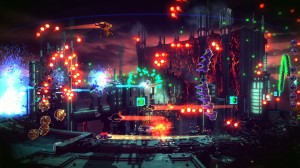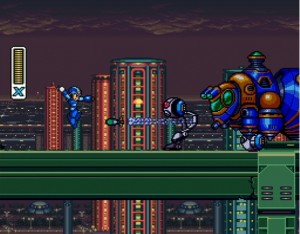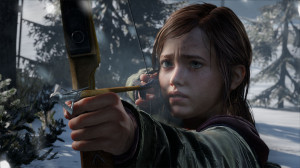“Let me just get to a save point” is a phrase known to anyone who lives with a gamer. Players squeeze as much time as possible in the digital world before being forced to attend an event and leave their progress behind. But there are instances where a mischievous player will push the envelope, skip a save point and continue playing just for a little bit longer (…or so I heard…from a friend; I would never do this to my family).
This anecdote and similar situations occur because games are designed to engage players. There is a system of rewards, in game  and perceived, which have gamers coming back for more. A quick gaming session can quickly become hours, as players try and scratch that gaming itch, but sometimes the more you play, the more you want to play.
and perceived, which have gamers coming back for more. A quick gaming session can quickly become hours, as players try and scratch that gaming itch, but sometimes the more you play, the more you want to play.
High Score
Before there was the Internet, there was darkness and dread. During those times people would gather together in rooms filled with giant videogame machines that could only play one game. One of the prizes awarded the great players of yesterday; the ability to enter three letters into the high score rankings. This would stand as a testament to anyone who played the game of who the best was for all time, or until the shopkeep reset the machine.
Today, online leader boards serve the same feature on a global scale. Skill based games such as Geometry Wars, Pac Man Championship Edition or Resogun challenge players to climb the ladder and prove they are best in the world. Gamers who chase the high score are constantly one upping one another by finding quicker tricks to clear a level or exploits for the score multiplier. Many games have leaderboards, but luck based games or rounds which require teamwork do not have the staying power of single player games. When developers create a system where players can see their abilities improve in direct correlation to their high score, they will continue to play one more round to best themselves and their friends.
Unlockables
Everyone’s favorite holiday is Christmas. People look forward to their birthday. Gamers receive that same feeling of joy from receiving the gift of top tiered weapons or a new skill. Some games provide players all the tools available at the beginning, but others will start players off with one item and introduce additional or variant weapons throughout the game. This not only serves as a great tutorial system (could you imagine starting with all Robot Master powers the first time you played Mega Man, it would be imitating) it provides gamers with a reward through gameplay.
And what do most people want to do once they unlock something new, give it a shot by playing more. Excellent design is able to balance a system of rewards and gameplay. By the time a player might be tired or playing with their newly unlocked toy, an  additional item should be right around the corner. This could cause a player to push forward a little bit more, unlock something else and the process repeats itself until a gaming coma is entered.
additional item should be right around the corner. This could cause a player to push forward a little bit more, unlock something else and the process repeats itself until a gaming coma is entered.
This is why I don’t understand why people will drop hundreds of dollars on F2P games, such as Hearthstone. It isn’t just the joy of having new items that keep people engaged with a product; it’s the feeling of accomplishment and reward for doing a good job that makes unlockables desirable. With every daily task I complete there is the hope of a great booster pack of cards that I earned, not bought.
Trophies
Combining the quest to climb the leaderboards with unlockables is the trophy/achievement system introduced during this previous generation of gaming. This creates an OCD gamer’s worst nightmare as the progress bar measures game completion and the most dedicated feel it is their mission to 100% everything. Beyond individual games is a trophy level/gamer score which prominently displays progress. The downfall of the system is that a higher score doesn’t dictate greater ability, unlike high score leaderboards. Trophy hunters will continue to gather and playthrough games to raise their score. This helps extend the life of games and increases the nature to collect em’ all.
Story
Gameplay is king, but it exists through the support of the story. As game design continually shifts to more cinematic approaches and complex storytelling mechanics players become engaged with the world around them. Despite studies which claim no one  remembers the story, gamers do care to move forward and see where the epic tale ends.
remembers the story, gamers do care to move forward and see where the epic tale ends.
RPGs and point-and-click adventure games are testimonials to the engrossing power of an excellent story. There are oftentimes large chunks of the game where control is taken away from players and the events unfold like a movie. This approach is finding its way into all genres of games. Bioshock: Infinite is a FPS whose mechanics are considered to be the worst part of the experience, but the twists throughout the story made it a 2013 Game of the Year Contender. It was defeated by The Last of Us. TLoU is a superb example of how stories can grab players and cause them to go through multiple chapters just to see what’s around the corner.
Status Summary
“At the end of it all, gamers play what we play, not for game over but what we take away.” The World is Saved lyrics. The takeaways differ from game to game and player to player but the feeling of accomplishment and addiction to keep moving forward are synonymous. If it’s an epic story, shiny new platinum, high score or unique powers that you seek, you must continue playing.
Wherein lies the simple addictive attributes of gaming. The more you play and gain a sense of completion, the more you want to continue and that feeling grows. So stop reading this article (well leave a comment below first) and go play your favorite game or newest game for a little bit; until you hit the next save point…or maybe the one after that…
Level Up, Friends!
